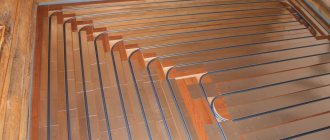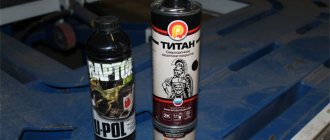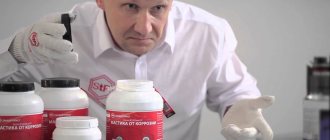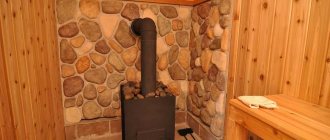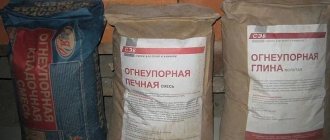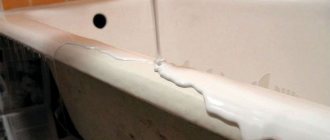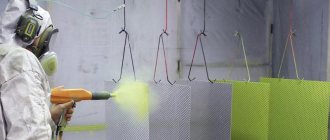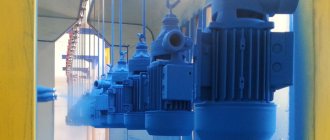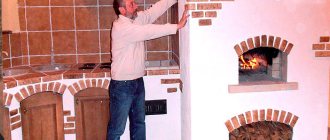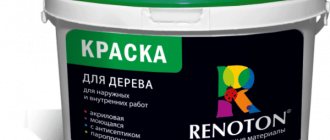Many consumers cannot answer the question of which is the best interior coating for a microwave oven. The article contains detailed information about microwave ovens and, after reading it, it is easy to determine which internal coating of a microwave oven is better.
A microwave oven is an indispensable tool in any kitchen. You may have already purchased a microwave oven or are just thinking about purchasing one. In any case, it will be useful to know the parameters that you need to pay attention to.
Why do you need interior decoration?
It is important that electromagnetic waves do not leave the working chamber, so the original purpose of the inner layer is to protect the user from magnetron radiation. Later, manufacturers assigned other functions to the coating: reducing electricity consumption, simplifying the care of electrical appliances, and others.
Types
To find out which microwave coatings are best, it is worth learning about the advantages and disadvantages of each type. There are four of them:
- heat-resistant enamel;
- stainless steel;
- ceramics or bioceramics;
- acrylic.
Helpful Tips:
- Clean the microwave only with special detergents intended for its care.
- Abrasive products may only be used on stainless steel surfaces.
- If the chamber is too dirty, then place a glass (another container) with water and lemon juice in it, boil the composition for 1 minute. Grease and dirt will liquefy and can be easily washed off with a cloth.
Important! You can prepare many delicious dishes using a microwave oven. Check out our article on the link with the best recipes for the microwave.
Enamel
The most inexpensive spraying on the walls of MVP, which does not require special care and is easy to clean after use from grease and other contaminants. It can withstand temperature changes only if it is not prolonged exposure to high temperatures - in this case the enamel may be damaged. If you are going to buy a microwave with all possible functions - grill, convection, automatic programs, the enamel may not withstand the load, so there are few such offers.
Food enamel, advantages:
- practicality of use;
- quick and easy cleaning without effort or skill;
- affordability;
- not afraid of sudden temperature changes.
Minuses:
- does not last long;
- will not tolerate high temperature conditions with prolonged exposure;
- enamel is susceptible to damage and requires care.
Tips for choosing a microwave oven
If previously microwave ovens were used only for heating food, modern models provide ample opportunities for full-fledged cooking. Being multifunctional devices, they cook, fry and bake, and do it faster than traditional kitchen appliances.
Stainless steel coating
If the walls of your microwave are made of stainless steel, then it doesn’t care about the temperature. But difficulties with maintaining cleanliness will arise immediately. To eliminate grease stains, stains and smudges, you will need constant care using special household chemicals.
So, stainless steel, the advantages:
- durability;
- strength and reliability;
- resistance to mechanical damage;
- tolerates temperature fluctuations and withstands high temperatures for a long time.
Minuses:
- needs constant careful care;
- it is difficult to wash off fat deposits from the surface;
- After a couple of years of use, it loses its attractiveness and shine.
Microwave oven rating: review of the best models of 2019–2020 (top 12)
Microwave ovens are one of the most popular household appliances. They are convenient to use: just put a portion of food on a plate and heat it up to the desired temperature in a few seconds. The assortment in stores is very large - choosing the right device is not at all easy.
To determine the best ovens available for sale, we ranked microwave ovens by quality and reliability among models popular with buyers in 2022 and 2022.
When compiling the top, we paid attention to reasonable functionality, price, workmanship and the opinions of the owners.
Service technician Alexander Kiselev
helped us review the best models of microwave ovens The microwave rating includes:
1. Samsung ME88SUW;
2. Horizont 20MW700-1378B; 3. MAUNFELD MBMO.20.2PGW; 4. LG MS-2042DB; 5. Samsung MC28H5013AW; 6. BBK 20MWS-728S/W; 7. Weissgauff HMT-207; 8. Gorenje BM235CLI; 9. REDMOND RM-2002D; 10. Candy CMW 2070 M; 11. Bosch BFL524MS0; 12. Daewoo Electronics KOR-770BS.
Bioceramic enamel
Models with bioceramic coating are recognized as one of the best. The even and absolutely smooth surface does not allow drops of fat to settle on the walls, and cleaning will not require the same effort as stainless steel. Despite its strength, ceramics are extremely fragile, so mechanical stress is detrimental to it.
Fact! With regard to BIO ceramics, there is a strong opinion that a maximum of vitamins are retained during cooking.
From the history
The technology began to spread more than 10 years ago in the advanced Asian countries - Korea and Japan, although the idea belongs to the American Aerospace Agency (NASA).
When choosing, experts recommend choosing this type, although the cost of such a microwave oven may be slightly higher than its analogues, but it will pay off.
Operating principle. When heated, the ceramic surface emits natural infrared waves. And the material consists mainly of silicon, titanium and calcium, and there is 250% more titanium in it than in conventional enamel used for such purposes.
The fact that bioceramics is superior even to stainless steel has been proven in independent tests carried out at the Bremen Research Institute. Advantages:
- Resistance to damage and the appearance of fatty deposits.
- Storing air heated during cooking inside the chamber.
- High antibacterial properties.
- Preserving the benefits of products.
But that's not all. Let's talk about cleaning, safety and fragrances.
Easy care
The material has non-stick properties, so combustion products of oils and other food residues do not stick to the surface. So, in a stainless steel chamber, when heated at a power of 1300 W for 150 minutes, the oil will burn and leave black marks - but with bioceramics everything will be fine under equal conditions. Over the years, the material, also unlike STAINLESS steel, does not lose color. And if you purchase a model with innovative Easy Clean coating from LG or Gorenje, virtually no maintenance is required.
Safety
This is a harmless material, especially when you consider that it is used in surgery and used to make medical accessories: belts, bracelets, etc. There are 24 types of bioceramics in total based on their composition and purpose.
The "right" smell
If you choose, for example, a model from Samsung - GE83XR/BWT, each dish will smell only of its ingredients, and not of the food that was prepared before. This eliminates the need for cleaning after each cooking.
There are disadvantages, and it is impossible to hide them:
- Overpriced compared to competing options.
- Fragility - chips and cracks can appear even from overheating, not to mention a shock or impact. Read about how to restore the coating in a separate review - we have described in detail how and with what to coat the camera in order to extend the life of the equipment.
How to paint a microwave
If the years of using a microwave oven are already behind you, and the enamel layer is slowly disappearing into oblivion, you can try to restore it yourself, using quite accessible materials.
Choice of product
Most often, when irreparable defects in the internal coating appear, users “say goodbye” to the old assistant and go for a new one. But there are people in whose hands any equipment can be restored. For such craftsmen, we have useful tips for painting the inside of a microwave oven.
You need to start by choosing paint, which must meet certain criteria:
- Do not release toxins when heated.
- Be resistant to humidity and temperature fluctuations.
- Match the “native” color scheme of the electrical appliance for harmony (but not necessarily).
What colors are suitable?
Before covering the inside of the camera, study the range of paints suitable for this undertaking.
Special organic food paints
An ideal choice, but the price is steep. The composition is resistant to any influences: temperature fluctuations, alcohol vapors, acids, humidity. They are absolutely harmless to the human body, because the composition is designed specifically for use in the food industry. They will lay perfectly evenly on metal and aluminum.
Enamel compounds for the food industry are usually used to paint drinking water containers, so you don’t have to worry about their environmental friendliness. The paints in question consist of zinc powder and an alcohol solution that has undergone special treatment.
Fact! The enamel prevents corrosion processes in the microwave oven due to “cold galvanizing”, can withstand temperatures up to 100 degrees, and is resistant to moisture.
Electrically conductive
In the composition you can find zinc, aluminum, silver or shungite. When dry, the layer becomes resistant to the environment and can withstand temperatures up to 200 degrees. It is rarely used in oven coatings due to its high cost.
Based on shungite
Shungite is a rock distinguished by its excellent energy-saving properties. 1000 kg of this material contains 300 kg of shungite carbon, the active properties of which are higher than those of coke. It is dense, durable, electrically conductive, so the bases, both antistatic and heat-resistant, come out of it what you need. Feel free to take these paints for the microwave oven.
Automotive acrylic
Cheap and cheerful. Requires sanding off rust and degreasing the surface. Available in cans: one is enough for one stove.
Painting process
Here you are unlikely to learn anything new, but just in case, study the stages of painting:
- Prepare the surface by sanding the chamber with a sheet of sandpaper. Level the bubbling surface.
- Degrease the camera with alcohol or its solution.
- Apply paint.
- Leave the chamber open until completely dry.
Now you know everything about microwave oven coatings: what they are, what their features are, and how to restore them yourself. Good luck with your choice or renovation!
Acrylic
Acrylic is not only used to cover plumbing fixtures - this material has also found application in the construction of MVPs. Despite the fact that the technology was applied not so long ago and could be of interest to the user, there is still no active demand for models with acrylic. Moreover, the buyer can choose only from budget models, with a power of no more than 1400 W. Usually found in solo models, which are used maximum for heating and defrosting food.
Surprisingly, acrylic has many advantages:
- strength;
- easy cleaning using a minimum of equipment - napkins and brushes;
- If used correctly, a stove with acrylic will last 5–7 years.
You can find acrylic walls in budget but very high-quality MVPs from such well-known brands as Samsung and Daewoo. For example, the small solo model Daewoo KOR-4115, designed for 14 liters and a power of 600 W, has acrylic walls. Users successfully use the oven to thaw frosts, heat food, prepare hot sandwiches - as they say, a typical microwave.
To ensure that your equipment lasts as long as possible, follow a couple of rules:
- Do not use high temperatures.
- Do not expose for a long time at high temperatures.
- Warm food in a covered container.
- If you have a grill, use it less often.
Additional functions
There are many more different functions that are responsible for ease of use and speed of cleaning. The most significant parameter is the presence of a grill. In its absence, the functionality will be significantly reduced, but cleaning the dirty surface will be much easier.
The following several features will enhance your capabilities:
- steam generator Dishes can be cooked using steam;
- sound prompts. The microwave oven prompts the correct chronology of actions using voice commands;
- a steam sensor will provide accurate monitoring of the condition of the dish;
- automatic start will allow you to start the oven if the owners are not nearby.
Often the seller seeks to deceive the consumer by offering him the wrong thing. An ordinary person will not always be able to independently understand the existing abundance of technology. The article contains information that will allow you to make the right choice and not regret money wasted
The uniqueness of microwave devices
The main advantage of microwave ovens over other kitchen appliances is speed. In this parameter, modern multicookers-pressure cookers, in which food is cooked under pressure, can compete with them. However, microwave ovens have an undeniable “advantage”: they can be opened during operation, whereas cooking under high pressure implies sealing.
The difference in speed is explained by the fact that ultra-high frequencies instantly penetrate inside to a depth of 5 cm and simultaneously heat up all water molecules, and therefore the entire product. When heated by fire or electricity, the molecules of the outer shells are accelerated first, while heating of the inner layers occurs later.
In addition to speed, microwave ovens have the following advantages over traditional kitchen appliances:
- compact dimensions;
- ease of care;
- no odors from cooking products;
- high efficiency: energy is spent on heating food, not the surrounding space;
- preservation of vitamins in products.
According to research by Russian scientists, food from a microwave oven retains 75-98% of nutrients, while in foods cooked on the stove, no more than 60% remain.
The sixth and most important factor is functionality.
Of course, technical characteristics and appearance matter, but it is impossible to ignore the issue of functionality. Before making a choice, you must definitely decide what the microwave will be used for at home - solely for heating or as a full-fledged worthy alternative or oven?
First, let's look at what microwave ovens can do:
- Defrost food. Here you can select manual or automatic mode.
- Cooking dishes according to given recipes. The food is loaded into the chamber, and all you have to do is select a recipe and indicate the weight of the product. The oven adjusts power and time itself.
- Ability to program your own recipes. Provided only in expensive models.
- Convection mode. Ovens with convection heating ensure uniform baking of the product. Convection, in essence, is an oven mode - which means that in a microwave oven the baked goods will turn out golden brown, and the nutrients in the food will be completely preserved. The convection mode is considered energy-consuming.
- The grill mode allows you to fry meat or fish with a golden brown crust. The grill can be quartz or standard heating element. Quartz works both more economically and faster. In addition, it does not require special care, since it is hidden in the ceiling, but the uniformity of frying will be worse. The heating element grill is a spiral with the ability to adjust the height and angle of inclination - the roasting is uniform, models with such a grill are a little cheaper, but they have high energy consumption.
- Steam cleaning will allow you to quickly and efficiently “scrub” the inner surface from food debris and grease.
- Removing odors. Provides a “ventilation” mode that eliminates the “aromas” of food from the internal chamber.
There are also models with a built-in steamer and steamer.
- Installation method. You can purchase built-in or free-standing equipment. The built-in one is placed inside the kitchen unit, saving space on the work surface, while the free-standing one retains mobility. At the same time, a built-in one may turn out to be more expensive than a regular one.
- Color also turns out to be important. Choose it so that it matches the shade of the kitchen unit or finish.
- Select the right additional components. For example, a multi-level plate stand is very convenient to use, with which you can heat several dishes at once, placing them one above the other.
- Some microwave ovens come with oven mitts and plastic caps to prevent grease from splashing onto the walls.
Methods for cleaning the oven
Cleaning the oven requires special attention. To facilitate this process, a huge variety of detergents have been developed. But oven cleaning products must not only effectively remove burnt grease, but also be safe for delicate women’s hands. It is this last condition that causes many problems. After all, a liquid that can dissolve fats has a harmful effect on both the skin of the hands and nails. In addition, cleaning solutions can cause an allergic reaction.
Using a covered container or roasting pan for cooking helps reduce fat splattering. But what if this is impossible? Oven manufacturers themselves help solve this problem. Modern models include coatings and devices that make cleaning equipment easier. This may include:
- Easy to clean enamel;
- Enamel with catalyst;
- Pyrolysis.
Cleaning by pyrolysis
Cleaning the oven by pyrolysis does not require human intervention; fat is broken down under the influence of a temperature of 500 0 C. To cover the inner surface of the oven, easy-to-clean enamel is used, which can withstand not only high temperatures, but also its sudden changes. At the same time, it does not crack or chip even with repeated pyrolytic cleaning. This method is considered the most effective, but has significant drawbacks.
First, you need to connect the oven to the ventilation system. This is necessary in order to maximally clean the air in the apartment from the acrid smoke generated by the combustion of fat.
Secondly, pyrolysis involves high heat, which puts a strain on the oven. This certainly affects its service life. Therefore, cleaning by pyrolysis should be carried out only in extreme cases.
Bioceramics - what is it?
According to the manufacturer, the interior of microwave ovens is covered with so-called bioceramics. Although, in appearance, bioceramics is similar to ordinary enamel, its composition contains much more silicon and titanium. This composition ensures that when exposed to high-frequency irradiation, the enamel begins to emit infrared waves of the natural range, similar to those emanating from the sun or open fire.
Thanks to this, more vitamins are retained in products, as well as other useful substances. At the same time, half the energy is spent on heating. It is precisely this property that made it possible to add the prefix bio to the word ceramics.
In addition, the bioceramic coating in the microwave is more durable than other coatings and even stainless steel. Much easier with this coating than any other. So when choosing, bioceramics or enamel in the microwave, it is better to definitely choose the first option.
Factor three - power
Characteristics such as microwave power are no less important. The advantage of powerful ovens is that food cooks faster in them. The power range can vary between 450-1680 Watts, but when choosing, you should focus on energy costs for a specific culinary process:
- To keep food warm, 100-150 W is enough;
- For cooking “delicate” foods and slow defrosting – up to 300W;
- For quick defrosting of small quantities of food – 400…500 W;
- Slow cooking/heating – 550…700W;
- Fast cooking/heating – from 800 to 900 W.
It is worth considering that the power should be proportional to the volume - the larger the internal chamber, the more powerful the device.
And do not forget that the power should be adjusted during the preparation of different products (by default it is set to 100%). For example, for meat dishes, 50-70% power is recommended, then the product will not become tough.
Selection options
The dimensions of the chamber are calculated based on the number of family members and the desired functionality; the higher these parameters are, the higher the cost of the microwave will be.
- A unit with a volume of 12-15 liters is optimal for 1 person. You can heat sandwiches, bake potatoes or defrost food in it.
- A stove with a capacity of 16-20 liters is sufficient for 2 people. There you can cook soup in a small saucepan or bake chicken.
- Units from 20 to 30 liters are designed for the average family of 3-4 people and the preparation of a wide variety of dishes: from borscht to pies.
- A device with a volume of more than 30 liters can satisfy the appetites of 5-6 eaters. This chamber will fit a whole goose or turkey; you can bake cake layers in it and prepare a large number of soups and side dishes at once. But remember that such a microwave will cost many times more than models for 1-2 people.
Types of paints
Stores today offer a huge range of paint and varnish products, so you can get confused as to which composition is best to choose to paint a microwave at home. Here is a list of paint mixtures that are suitable for painting the inside of a microwave oven:
Organosilicon dyes have the highest resistance to extreme temperatures and are suitable for painting the inside of a microwave. These paints are resistant to mechanical, chemical and high humidity. To paint with this composition, you can use a regular brush; the mixture spreads evenly on any type of metal, and perfectly protects it from corrosion and rust. After applying the paint, an effect similar to cold galvanizing is created, so the microwave oven can be used for a very long time;
- electrically conductive. They consist of silver, aluminum and zinc; after drying, the coating becomes resistant to the adverse effects of various factors. For example, the paint layer can be operated at a temperature of 170-200 degrees. Although electrically conductive compounds are not cheap, they are great for painting the inside of a microwave oven. These paints do not emit any harmful or toxic substances when heated, and are absolutely safe for humans. The most popular electrically conductive paint is from Zinga;
- shungite. Shungite is very similar in its characteristics to graphite; it is a natural material that is an electrically conductive composition. After painting, the device becomes fireproof; shungite mixtures are used in the field of finishing; they are well suited for painting a microwave at home. Shungite coating can easily heat up to a temperature of 300 degrees and forms an antistatic film that is completely safe for humans;
- automotive acrylic paints. They have increased strength and high reliability, so they are suitable for painting microwaves. Most often, these mixtures are supplied in aerosol cans, making their use very convenient; you can easily paint any hard-to-reach places. These paints are reasonably priced; one can is enough to paint two layers of the inside of a microwave oven. Acrylic dyes provide excellent protection against corrosion, rust, withstand the negative effects of steam, moisture, grease and strong heat without damage, are environmentally friendly and durable;
- special coloring agents for household appliances. These are enamels based on epoxy resin, for example, New-ton dye. It is produced in the form of an aerosol and is white in color. The disadvantage of the composition is the ability to withstand temperatures of a maximum of 100 degrees, so these mixtures are used more often for treating the outside of microwaves.
Operating principle of a microwave oven
Heating of food in a microwave occurs under the influence of ultrahigh frequencies (microwave). They act on the liquid molecules that are present in every product. Under the influence of electromagnetic vibrations, water molecules begin to move faster, colliding with each other. Thanks to this, the temperature of the product increases and the food heats up quickly (up to a maximum of 100 ºC).
The low maximum temperature does not allow achieving a golden crust when cooking meat and baked goods, but manufacturers have found a way out by equipping modern microwave ovens with grills. This option allowed microwave ovens to become equal in functionality to ovens, surpassing them in cooking speed; however, the price of such devices has become higher.
Despite the convenience and efficiency of microwaves, many users are in no hurry to acquire this useful device, doubting its safety. In fact, microwave ovens are harmless to humans. This is facilitated by several degrees of protection:
- tight fit of the door;
- screen with a protective mesh that captures electromagnetic waves;
- locking the door of a working device or automatically turning off the oven when opened.
